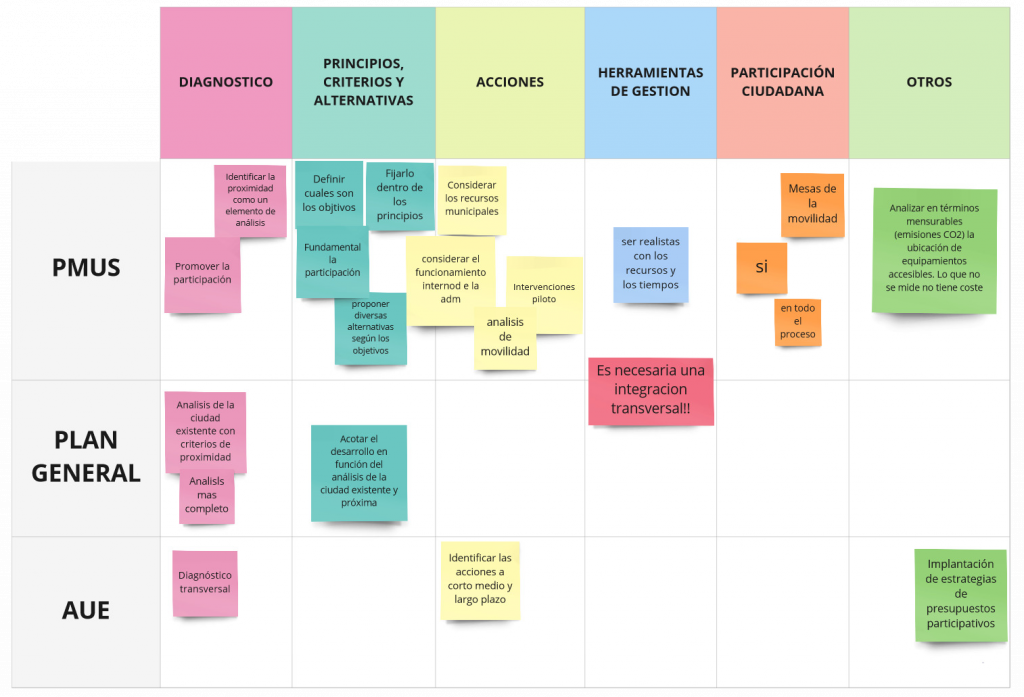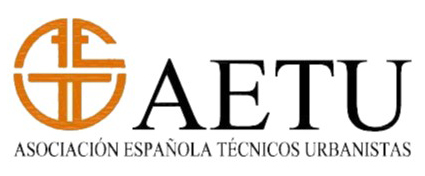II UPM Forum "15-Minute City & Health"
Planning of nearby, lively and healthy neighborhoods in general plans, PMUS and AUE
Held on October 18, 19 and 20, 2022 at the Superior Technical School of Architecture of Madrid
Of the four to be held, the second 15-Minute City & Health Forum, framed in the Acc<15 R+D+i Project, sought to analyze the opportunity to incorporate the 15-minute city model, technically Accessibility Planning, that is, accessibility to basic services in active modes (on foot or by bicycle) or sustainable (micromobility and public transport), in municipal planning tools (PGOUs, PMUS, AUEs, etc.), as well as in their processes.
The Forum’s final objective was to generate and share knowledge through conferences and workshops, including both planning and engineering companies and municipal technicians, particularly from the 121 pilot municipalities in the Spanish Urban Agenda and the 63 from the Impulso Network, which are among those that have generated the most activity in the Recovery, Transformation and Resilience Plan.
Lecture sessions
Opening day (18.10.22)
The opening of the forum was taken upon by Manuel Blanco, director of the Higher Technical School of Architecture of the Polytechnic University of Madrid (UPM) and Patxi J. Lamíquiz, main researcher of the ACC<15′ project and organizer of the event. In his speech, Manuel Blanco stressed the importance of health as a key and transversal issue to the current problems of the city and how its solutions find support within the framework of the Sustainable Development Goals.
Beginning the cycle of presentations, Sebastian Seisenberger, a researcher at the Department of Urban Structure and Transport Planning of the Technical University of Munich (TUM), with his presentation “The integration of the X-Minute City concept into local planning documents – A worldwide review” spoke about the integration of the x-minute city in planning documents. From the concept as a measurement, as a main strategy or as a guiding principle, Sebastian reviewed the different current implementation approaches through cases such as Ottawa, Melbourne, Rome or Paris.
The following was the presentation by Patxi J. Lamíquiz, “Genealogy of the 15-minute city”, in which he synthesized the keys to the 15-Minute City model promoted by Carlos Moreno and Anne Hidalgo, as well as its theoretical principles, its levers for action and some of its barriers to implementation.
This was followed by the presentation “Universal accessibility, health and the 15-minute city” by Ester Higueras, director of the Master’s Degree in Urban Planning and researcher of the ACC-15′ project and Alba Ramírez, doctoral student and researcher of the ACC<15′ project. Both talked about the relationship between the city of proximity and health policies, focusing on comprehensive health action plans.
Closing the day was Demetrio Gómez Xunqueira, Councilor for Sustainability of Public Spaces, Works, Social and Territorial Participation of the City Council of Pontevedra, who with the presentation “Pontevedra. Walkability as a process” explained the work made in Pontevedra towards a model of a nearby city, alive and sustainable; from its principles, objectives and actions to the lessons learned during the process. Lessons such as the importance of a global idea as opposed to sectorial measures, the ineffectiveness of push and pull policies and the incompatibility of speed with the quality of urban life.
Second day (19.10.22)
La segunda jornada del foro comenzó con la ponencia de Xavier Matilla, (….) del Ayuntamiento de Barcelona, “Barcelona. Implementación de supermanzanas” en la que, entre otras cuestiones, explicó la metodología colaborativa y los protocolos de monitorización en los que se apoya la implementación de las superilles y el proceso de transformación de la ciudad a este nuevo modelo de redes peatonales y de espacios públicos vivos y complejos, en los que las soluciones basadas en la naturaleza también juegan un papel importante.
A esto siguió el turno de Manuel Saravia, (…) del Ayuntamiento de Valladolid, con la ponencia “Valladolid. Ciudad de proximidad y PGOU” . Durante su intervención, Manuel Saravia enumeró los elementos y criterios clave con los que, desde el Plan General de Ordenación Urbana, Valladolid está trabajando para alcanzar un modelo de ciudad de proximidad o, como se definió en el momento de la elaboración del plan, un modelo de ciudad amable. Elementos y criterios como la ciudad compacta y sus densidades, que llama a la actuación en los intersticios de la ciudad existente, la vivienda, las infrastructuras y la movilidad, los espacios libres o las técnicas de elaboración del propio planeamiento.
En la a tercera ponencia, “Regenera ensanche Albacete”, Iñaki Romero, arquitecto y miembro fundador de la oficina de planificación urbana integral Paisaje Transversal, presentó el proyecto de transformación urbana del ensanche de Albacete. Un proyecto estructurado a través de una Estrategia de Regeneración Integral y Participativa, un Plan Especial de Reforma Interior y, finalmente, una Acción Piloto y que recoge las diversas oportunidades ofrecidas por la ciudad de proximidad, como son la eficiencia energética, la conservación ambiental o la salud de sus ciudadanos.
Cerró la jornada Uxio Benitez, (…) de la Diputación de Pontevedra. En su presentación, “El modelo Ágora: Reforma urbana para la proximidad en municipios rurales. El caso de Goián, Tomiño”, puso sobre la mesa las dificultades para intervenir y lograr un modelo de proximidad en aquellos municipios rurales y de base agraria, como es el caso de Tomiño, con unos patrones de ocupación y asentamientos complejos que la planificación de principios de siglo convirtió en el paradigma de la dispersión. La intervención en el núcleo urbano de Goián se presenta así como un caso de éxito de reconfiguración del espacio público con el fin de recuperar un espacio social y comunitario perdido en las antiguas visiones políticas y urbanas que privilegiaban, ante todo, un modelo lineal de grandes vías de circulación.
Tercera jornada (20.10.22)
La tercera y última jornada de esta segunda edición del foro “15-Minute City & Health” concentró cinco ponencias que ofrecieron una vista panorámica a la diversidad de herramientas y aproximaciones a la implementación de la proximidad en la planificación urbanística. Comenzando con Sonia Hernández Partal, (…) del Ministerio de Transportes, Movilidad y Agenda Urbana (MITMA), que en su ponencia “Planes de acción y proximidad en Municipios Piloto Agenda Urbana Española” presentó las características clave de la Agenda Urbana Española, así como el marco internacional que respalda y establece sus bases, la vinculación de ésta con la ciudad de proximidad y, especialmente, la articulación entre los planes de acción local y la AUE.
Le siguió la ponencia “Indicadores de proximidad y complejidad y Agenda Urbana Española” de José Carpio, profesor (…) del Departamento de Urbanistíca y Ordenación del Territorio de la ETSAM y coordinador del proyecto ACC<15′. En su intervención, José Carpió presentó algunos de los resultados y conclusiones de un trabajo conjunto entre el DUyOT y el MITMA, centrado en evaluar el método de cálculo de algunos de los datos descriptivos que sirven a la fase de diagnóstico de la Agenda Urbana Española, identificando las problemáticas presentes y planteando posibles alternativas.
Llegados al meridiano de la jornada fue el turno de Sonia Freire, (…) en la University College of London, quien con su ponencia “Actividades. Gestión de espacios. ‘Meanwhile’ en Londres” explicó la evolución y diversidad de los espacios meanwhile, aquellos espacios que dan soporte a usos temporales y que se definen como intervenciones tácticas dentro de estrategias más amplias y potenciales generadoras de transformaciones urbanas.
A continuación, Gabriela Callejas, arquitecta co-fundadora y directora de Cidade Activa, presentó su ponencia “Participación. Bottom-upm para la movilidad ciclista y peatonal en el contexto de recursos limitados”, a través de la cual resaltó la importancia de la participación y de trabajar con aquellos que tienen la capacidad de cambiar el paisaje urbano que habitan; un paisaje urbano que, en última instancia, tiene la capacidad de condicionar, junto a la cultura, los hábitos y comportamientos o la relación de las personas con el lugar.
Finalmente, la última ponencia del día fue la de Manuel Benito, doctorando en Sostenibilidad y Regeneración Urbana e investigador del proyecto ACC<15′. Con el título de “Importancia de factores de proximidad en la movilidad peatonal”, Manuel Benito presentó una aproximación al estudio de la peatonalidad desde el feature importance y la elaboración de modelos de caminabilidad que puedan llegar a informar la toma de decisiones.
Workshop sessions
In addition to the presentations, the forum organized two workshop sessions in which members of the public administration, teachers, researchers and professionals from different fields shared their different perspectives and professional experiences regarding the planning of the proximity city. The dynamics of each one of the workshops, elaborated specifically for the context of this UPM forum and in collaboration with the Technical University of Munich (TUM), were the fundamental tool that facilitated the exchange of knowledge and opinions among the attendees.
Understanding the 15-Minute City. Activities and spaces
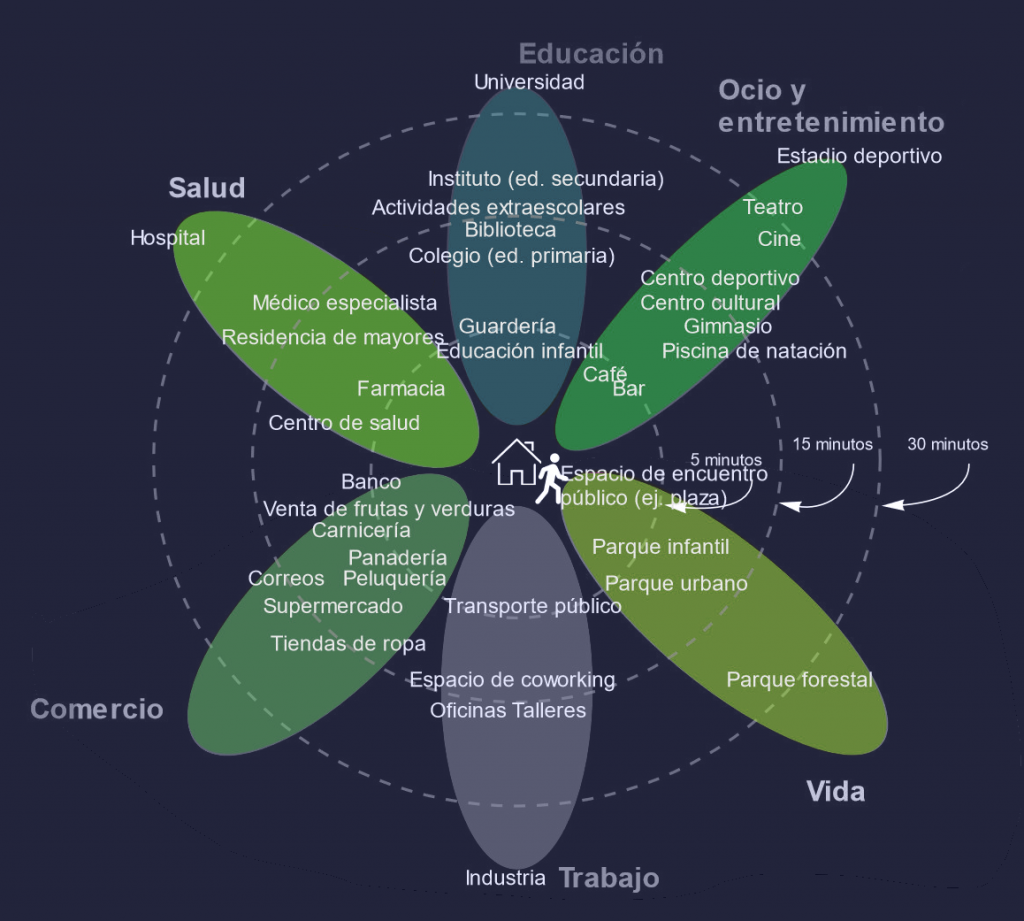
The first session tried to approximate the definition of the fifteen-minute city, understanding the relationship between the various activities and urban spaces and the access time to them in active modes, alongside the barriers or opportunities for reaching said model. Each participant individually elaborated a proximity flower and participated in the generation and collective discussion of a common approach. An exercise that served to underline the relevance and interest of certain issues related to the model.
Contrary to what was anticipated prior to carrying out this exercise, there is unanimity regarding the most relevant services and the distance at which they must be found from our home. Obviously each city has its characteristics, but many common elements have been found within them. Even so, the importance of flexibility in the model was highlighted. It needs to be adapted to the unique context of each city and to the needs and socioeconomic conditions of the neighborhoods. In Spain, many urban areas already meet the parameters of the fifteen-minute city. Is it, then, a relevant model only in the peripheral areas of large cities or metropolitan areas?
Health was another of the fundamental issues in the discussion, especially the health of the most vulnerable population. How can increasingly fundamental services, such as nursing homes, benefit from the proximity city model? Considering specially the trend towards a progressively older population? Is it key to think about new facilities that adapt to new needs? How can we implement social welfare areas in local councils?
On the other hand, public space and mobility were, as expected, another of the recurring themes in the debate. The need to think of the street also as a hyper-proximity meeting space, and not only as a space for traffic, was stressed. The street as an urban space with the capacity to increase urban complexity, favor close social relations and help in the creation of identity and a sense of belonging. It was also pointed out how important habits are as a determining factor in modal choice and as a barrier to the transition to a more active and sustainable mobility model. Is our perception of times and distances conditioned by our mobility habits? How can we, from our various fields of action, favor changes in mobility habits?
Barriers and opportunities for the implementation of the 15-Minute City in the local context
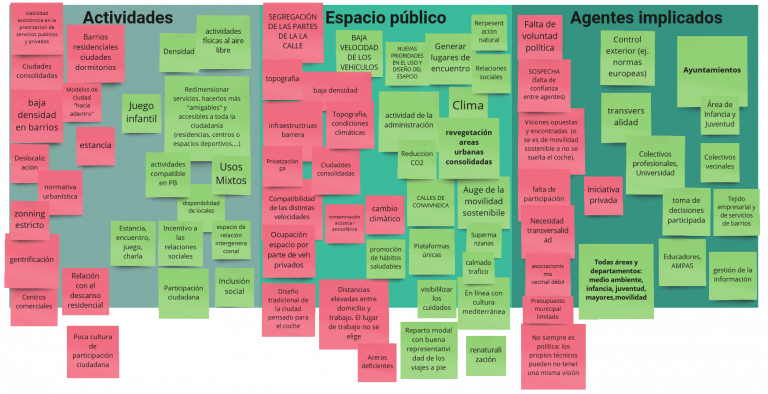
Following another activity proposed during this first session, the debate approached the difficulties of implementation in the current urban planning paradigm.
The Mediterranean city model seems to be closely related to the fifteen-minute city, since it incorporates many of its key conditions: density, mix of uses, and the historical and cultural understanding of free public space as a space for political, social and recreational space. The problem, it seems, is in low-density urban developments; an uban model in which, on the other hand, many citizens seem to find a multitude of virtues and aspire to make them their place of residence.
The question of citizen participation also arises. Do we really know how to promote participation and how to incorporate the results into decision-making? Does the current model really bind politicians and technicians to be consistent with the consensus reached with citizens and their associations? Related to the latter, some technicians comment on the limited capacity for action that a lack of global and long-term vision of the city entails. Without political commitment, without transversality and without citizen associations, it is impossible to achieve a new conception of the city and take advantage of the opportunities that, on the other hand, are being detected. Opportunities such as the regeneration, transformation and reconversion of the existing; the reuse and adaptation of the city to future scenarios of climate change, scarcity of resources and energy poverty.
Cómo integrar la accesibilidad y la proximidad en la planificación urbana y de la movilidad
Durante la segunda jornada el trabajo de los grupos de discusión se centró más en la materialización del modelo y su implementación en las formas urbanas y herramientas de planificación actuales.
Parece claro que el modelo de ciudad de 15 minutos interesa a los técnicos y a la administración, por la potencial mejora de la resiliencia urbana, de la infraestructura social y de los valores ambientales. También desde la perspectiva de la gestión, ya que el modelo parece ofrecer la oportunidad de acercar la administración a los ciudadanos y reforzar la relación entre ambos.
Sin embargo, rápidamente se señalan barreras a la integración de la accesibilidad y la proximidad en la planificación urbana. La falta de coordinación entre las distintas administraciones y la legislación, en todas las escalas, dificulta poder llegar a políticas efectivas que estén dirigidas a un objetivo claro como el de la ciudad de proximidad. Los PGOU no están permitiendo, en la mayoría de los ayuntamientos, avanzar hacia una ciudad de proximidad; se está recurriendo en su lugar a instrumentos como los PERIs, los cuales se abordan desde diferentes departamentos, independientes y sin relación entre sí. Sin un liderazgo político con una visión de ciudad clara, acciones aisladas, como la peatonalización de una calle, pueden tener resultados contrarios a los previstos y esperados.
La desactualización de las normativas también aparece como tema recurrente en la discusión. No se puede responder a las necesidades de la vida actual ni actualizar el uso de espacios y equipamientos cuando las herramientas no respaldan dichas acciones.
Otro tema importante y a señalar es recordar que los territorios no son ajenos a su entorno, si no que se ven condicionados por diferentes tejidos ajenos al control de los municipios.
Therefore, and as a conclusion, the following consensus is reached:
- Although the issue of proximity is present in public administrations, in many town halls there is still a lack of clear leadership that allows the model to materialize. It acts in isolation, intervening in the public space of some streets, but there is no common and lasting project over time.
- Outdated frameworks as a barrier to getting fifteen-minute cities.
- The 15-minute city rests on two clear pillars: proximity and daily uses. None of the three tools discussed (PMUS, PGOU and AUE) act simultaneously on these two pillars, so a transversal tool or coordination among the three seems necessary.
- There are also no tools to measure proximity. It is the day-to-day technician who makes an extra effort and the administration does not have resources or advanced personnel for this.
Planning from polycentrism versus planning from the neighborhood
How could planning be closer to the needs of citizens? Participation, adapted to the citizen and to the different phases of the planning process seems to be the way to go. It is pointed out that participation must also be present in the strategic phases and must include, to a greater or lesser extent, all sensitivities and opinions. Although this entails difficulties and we are far from that goal. It is therefore important that city council technicians are trained in both participation tools and gender mainstreaming. It is also proposed to launch participatory processes from experimentation, which allow conclusions to be drawn from action and not only from debate.
Does the urban and/or transport planning of your city include (or does it make sense to include) polycentrism as a problem to consider? In the case of municipalities with small or medium-sized cities, polycentrism can generate a complex, diverse physical, social and green structure that improves the quality of life of its citizens. For this, it seems to be needed to modify the axes of the itineraries and review the General Plans. In the case of metropolitan areas, there are already different center-periphery, periphery-periphery or center-center connections and what is observed is that it is difficult to intervene in them, given that many of these connections arise as a result of the location of hard infrastructures such as housing. It is for these cases important to think about the necessary tools to address this problem.

As a final conclusion, the following issues stand out:
- It is necessary to adapt the unit and scale of the project to each municipality and its functional urban structure. The public transport lines or the existing polarizations of public services and facilities condition the interventions and make it counterproductive in many cases to have an isolated vision of the municipality.
- A feedback phenomenon is observed within citizen participation. The existence of a certain proximity is important, generating community and a feeling of belonging, so that there is a participatory will from the citizenship. Simultaneously, participation, as has been commented, must be the engine of proximity policies. How to break that cycle?
- The street, as a linear public space, is where it is easiest to generate local public space.
- The mixed-use city generates conflicts. Two issues are pointed out here, on the one hand, it is recalled that design and management measures are key when it comes to ensuring that the various uses, on a hyperlocal scale, do not imply mutual harm. On the other hand, conflict is inherent to the diversity and complexity that an urban environment needs.
- In our way towards the 15-minute city we cannot forget the main objective of achieving a fair and just city.
Patrons
Invited companies and organizations















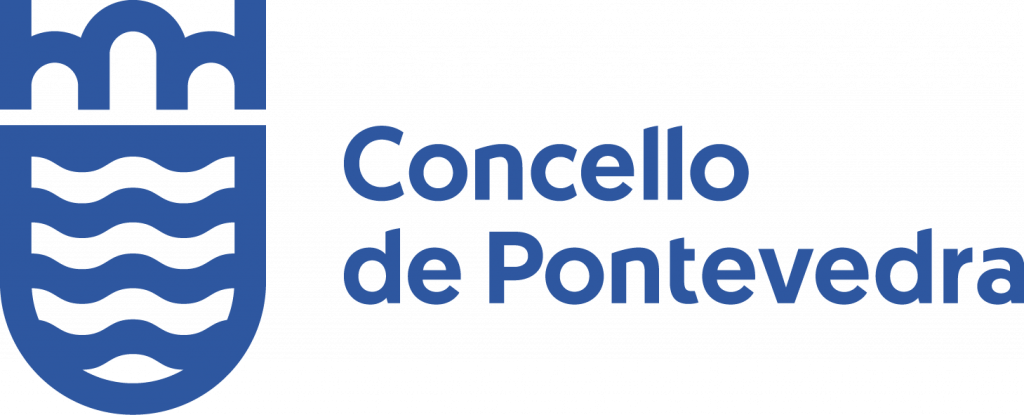
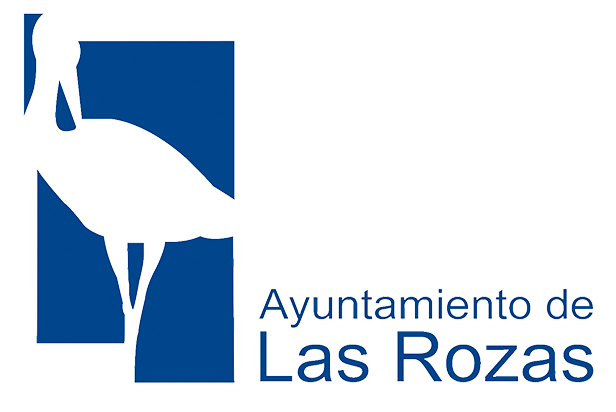
Organizing Committee


